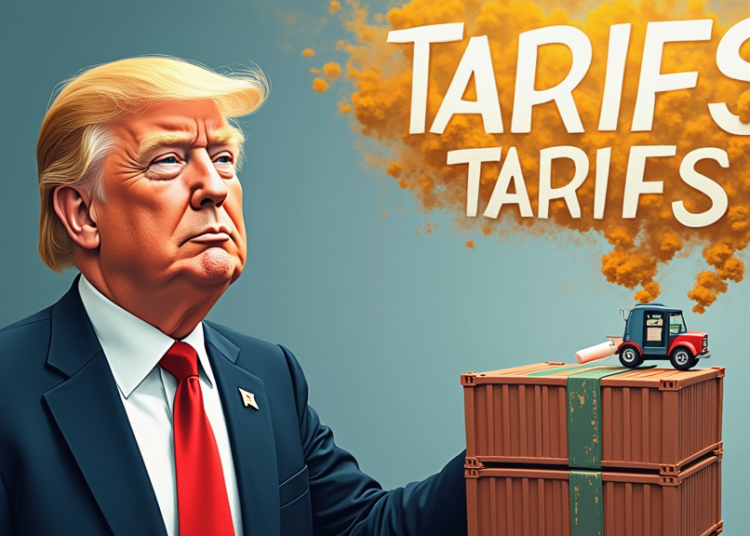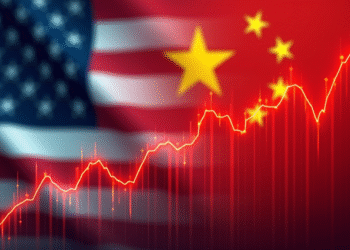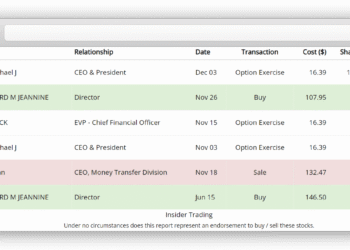In a bold move likely to reshape international trade dynamics, the Trump administration is considering sweeping tariffs of 20% on a wide range of U.S. imports. This proposal, which is being touted as a pivotal element of President Donald Trump’s trade strategy, has raised concerns about the potential economic repercussions, including increased prices for consumers and retaliatory measures from global partners. Analysts warn that these 20% tariffs could trigger a recession and elevate unemployment rates dramatically if countries respond aggressively to such measures. The looming economic impact of tariffs suggests a troubling landscape for U.S. businesses and labor markets alike, prompting heated debates among policymakers. As the nation awaits further details on the tariffs, the financial markets are already bracing for volatility, reflecting anxieties about the future of trade relations.
The recent consideration of imposing significant import levies hints at a transformative approach to trade relations by the current administration. These new measures, often referred to as hefty import taxes, have sparked discussions around reciprocal duties that could redefine how the U.S. interacts with its trading partners. With analysts closely monitoring this development, the potential fallout from such trade impositions could lead to a ripple effect across various industries, affecting both prices and job markets. As the U.S. navigates this complex landscape, the economic implications of tariffs on global imports remain a crucial topic for discussion in both political and economic circles. The anticipation surrounding these trade changes marks a significant chapter in the ongoing dialogue about America’s position in the global economy.
Understanding the 20% Tariffs and Their Implications
The proposal for imposing a sweeping 20% tariff on most imports represents a significant shift in the U.S. trade policy under President Trump’s administration. This new approach is part of a broader strategy aimed at revitalizing domestic industries by making imported goods more expensive, therefore encouraging consumers to buy American-made products. As the White House prepares for this pivotal announcement, analysts and economists are grappling with the potential fallout from such drastic measures.
The 20% tariffs, if implemented, could have far-reaching effects on U.S. imports and the overall economy. Retail prices may rise, affecting consumer spending patterns and potentially leading to inflation. Additionally, analysts warn that aggressive responses from trading partners could escalate into a trade war, prompting reciprocal tariffs that would further strain economic relations and destabilize markets.
Economic Impact of Tariffs: Risks and Forecasts
The economic impact of tariffs is a hotly debated topic among economists, especially concerning the proposed 20% tariffs. While the intention behind such sweeping tariffs is to shield U.S. jobs and industries from foreign competition, experts like Mark Zandi from Moody’s have raised alarms about the worst-case scenarios. His forecasts suggest that a widespread tariff regime could spiral into a recession, notably if trading partners retaliate with their own tariffs, which could surpass current trade tensions.
The threat of rising unemployment, predicted to exceed 7%, along with substantial stock market declines, creates a precarious economic outlook. As investors digest these forecasts, market volatility is expected, with futures indicating declines in major U.S. indices. The uncertainty surrounding the tariffs has led to a cautious approach from markets, awaiting clear guidelines on the implementation of these trade measures.
Reciprocal Tariffs vs. Sweeping Tariffs: Strategic Options
In the ongoing trade discussions, the distinction between reciprocal tariffs and sweeping tariffs remains pivotal. President Trump has emphasized his preference for reciprocal tariffs that would target specific nations, potentially limiting the economic fallout from blanket tariffs. This tailored approach might mitigate some of the adverse effects on consumers while still addressing the trade imbalances that have long frustrated American manufacturers.
By focusing on countries that impose high tariffs and trade barriers against U.S. goods, such as those referred to as the “Dirty 15”, the administration could strike a balance that safeguards U.S. interests without alienating key trading partners. This strategy aims to foster fair trade practices and enhance domestic manufacturing without igniting a full-fledged trade war that sweeping tariffs would likely provoke.
Market Reactions to Proposed Tariffs
The announcement of potential tariffs has already sparked noticeable market reactions, underscoring the direct link between trade policies and investor confidence. Major U.S. indices like the S&P 500 and Nasdaq have shown declines in premarket trading as traders respond to the uncertainty around Trump’s tariff plans. A 20% tariff could disrupt supply chains and increase costs for consumers, prompting concerns among investors about long-term economic stability.
As the markets brace for what has been termed “Liberation Day”, the environment is fraught with unpredictability. With investment strategies shifting in light of these developments, analysts are closely monitoring the implications of Trump’s proposed trade policies. The uncertainty is compounded by the potential for retaliatory measures from other nations, which could have lasting effects on global markets.
The Political Landscape Surrounding Tariffs
The political implications of the proposed 20% tariffs are extensive, as domestic and international stakeholders assess their potential impact. Politically, the tariffs could serve as a rallying point for Trump’s base, reinforcing the narrative of prioritizing American jobs and industries. However, there are significant risks, as some political leaders express concern over the backlash from both consumers and business interests potentially opposed to such sweeping changes.
Moreover, international diplomacy could face strains as the U.S. heads towards an unpredictable trade landscape. As critics warn of the potential for a trade war, policymakers are under intense pressure to navigate these waters carefully. Balancing economic growth while pursuing an aggressive trade strategy will be crucial for maintaining political stability and ensuring the administration’s economic goals are met.
Tariffs and Their Role in Trade Deficits
The imposition of tariffs, particularly the proposed 20%, is fundamentally linked to the ongoing issue of the U.S. trade deficit. National Economic Council Director Kevin Hassett has identified specific nations that contribute significantly to this deficit, suggesting that targeted tariffs could rectify imbalances. By applying tariffs to these key trading partners, the U.S. aims to create a more equitable trading environment that promotes American products.
Trade deficits have long been a contentious issue, often viewed through the lens of job loss in domestic markets. The administration’s strategy to address these imbalances through tariffs may be met with both support and skepticism, as the economic repercussions could vary widely. Analysts argue that while tariffs might generate short-term relief for some sectors, they could also lead to increased costs for consumers and retaliatory actions from other countries.
Long-term Effects of Tariffs on American Businesses
The long-term effects of the proposed tariffs on American businesses are still unfolding, yet the uncertainties raise valid questions about sustainability. Companies could face increased operational costs due to higher import prices, leading to adjustments in pricing strategies. If tariffs lead to significant price hikes on goods, consumers may shift their purchasing habits, which could dampen sales for American businesses reliant on imported materials.
Furthermore, the potential for retaliatory tariffs from other nations poses risks for American exporters. If trading partners respond aggressively, it could create a ripple effect, impacting not just immediate markets but also long-term trade relationships. Businesses must prepare for this landscape by adapting their strategies, potentially seeking domestic supply alternatives to mitigate risks associated with tariffs.
Forecasting Future Trade Policies Under Trump
As the U.S. navigates this transformative phase under Trump’s administration, forecasting future trade policies, particularly regarding tariffs, becomes essential for economic planning. Analysts speculate that the proposed 20% tariffs may set the stage for a broader reevaluation of trade practices among nations. With critics pointing to the potential for economic disruption, the administration faces the challenge of establishing a coherent policy framework that addresses trade imbalances while minimizing adverse economic effects.
Furthermore, the nature of ongoing negotiations will be pivotal in shaping the future trade landscape. As much as tariffs aim to protect American interests, creating a collaborative approach with trading partners, as opposed to a combative one, could yield long-term benefits for all involved. Adapting to this intricate balance will be key as the administration strives to navigate complex economic relations.
Public Opinion on Tariffs and Trade Strategy
Public opinion plays a critical role in shaping the success of any trade strategy, including the proposed implementation of 20% tariffs. As citizens react to potential changes in prices and availability of goods, their support or opposition could influence future policy decisions. Understanding the sentiments surrounding these tariffs is crucial, as widespread dissatisfaction could lead to political repercussions, affecting not only Trump’s presidency but broader economic stability.
Polls suggest that while there is support for protecting American jobs, there is equally significant concern about the impact of tariffs on consumer prices and trade relationships. Policymakers must ensure that the proposed tariffs resonate positively with the public to avoid backlash. Engaging with communities and stakeholders will be essential in garnering support and effectively communicating the rationale behind these sweeping changes.
Frequently Asked Questions
What are the potential economic impacts of the proposed 20% tariffs on U.S. imports?
The proposed 20% tariffs on U.S. imports could lead to significant economic disruption. According to economic analysts, such sweeping tariffs risk triggering a recession, with predictions of a stock market drop of 25% and unemployment rates potentially exceeding 7%. Additionally, this strategy may result in the loss of over 5 million jobs by early 2027, highlighting the severe economic impact that could result from the implementation of these tariffs.
How might reciprocal tariffs differ from the proposed 20% tariffs?
Reciprocal tariffs differ from the proposed sweeping 20% tariffs in that they would target specific countries that impose high tariffs on U.S. goods. This approach aims to create a balanced trade environment without imposing blanket tariffs on most imports. Officials have suggested that a selective tariff strategy could minimize economic disruption compared to sweeping tariffs, which could adversely impact a broader range of goods and services.
What is President Trump’s trade strategy regarding the 20% tariffs?
President Trump’s trade strategy includes the imposition of sweeping tariffs of about 20% on most imports as part of his transformative policies aimed at reducing the trade deficit. This strategy is often discussed in the context of ‘Liberation Day’ and emphasizes the need for reciprocal tariffs against countries that impose unfair trade practices, thus reflecting his broader intention to protect U.S. manufacturing and jobs.
What countries might be targeted by the 20% tariffs under Trump’s proposal?
While specifics have not been disclosed, reports indicate that the 20% tariffs may target a subset of countries deemed as contributors to America’s trade deficit. References to the ‘Dirty 15’ suggest that the focus could be on the 15 countries responsible for significant trading volumes and high tariff rates on U.S. goods. However, final decisions on targeted nations remain uncertain as officials continue to evaluate various tariff strategies.
How are the markets reacting to the announcement of the 20% tariffs?
Markets have reacted cautiously to the potential announcement of the 20% tariffs, with futures on major U.S. indices falling as investors brace for the economic impact. For instance, the SPDR S&P 500 ETF Trust and the Invesco QQQ Trust both reported declines in premarket trading. This apprehension reflects broader concerns over how the implementation of sweeping tariffs might disrupt trade and economic stability.
| Key Point | Details |
|---|---|
| Proposed Tariffs | The White House has drafted a plan to impose tariffs of about 20% on most imports as part of a trade strategy. |
| Economic Impact | Moody’s chief economist warns that 20% tariffs could lead to a recession, exceed 7% unemployment, and cost over 5 million jobs. |
| Market Reactions | Futures on major indices fell, with the SPDR S&P 500 ETF Trust down 0.43% and gold prices hitting a record high of $3,130. |
| Strategic Considerations | White House officials are considering multiple tariff strategies, with a potential focus on specific countries producing trade deficits. |
Summary
20% Tariffs are at the forefront of the White House’s proposed trade strategy, aiming to reshape U.S. economic relations. The implications of such tariffs are complex, raising concerns about potential economic downturns and job losses. While the administration explores various approaches, market reactions indicate uncertainty, showing mixed responses as stakeholders await further announcements. Understanding the full impact of 20% Tariffs will be crucial for future economic conditions and international trade dynamics.













